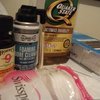I don't reload lead anymore because of some severe leading I had with a 44 Special.
I did the normal Hoppes and brush routine. No go.
I used Lead Away cloths. Some lead cleaned but still, no go.
I used some Shooter's Choice Lead solvent and let it soak in the barrel for a few rounds of 24 hour periods. Again this helped but No Go. It got most of it out but still leaded but not severely.
On the advice of an old timer at the LGS who knows his stuff I shot a few plated bullets through on my next range trip. Clean as a whistle!
So I'll stick to plated or jacketed bullets from now on so I never have to scrub like I did or expose myself to the chemical solvents.
Hickock45 did a video on the subject and he's been shooting the lead out for decades.
YouTube
Thank you. This is pretty much what I’ve been saying. Of there is anything left after a good clean that just won’t give, a jacketed followed my another good clean will get rid of everything else

